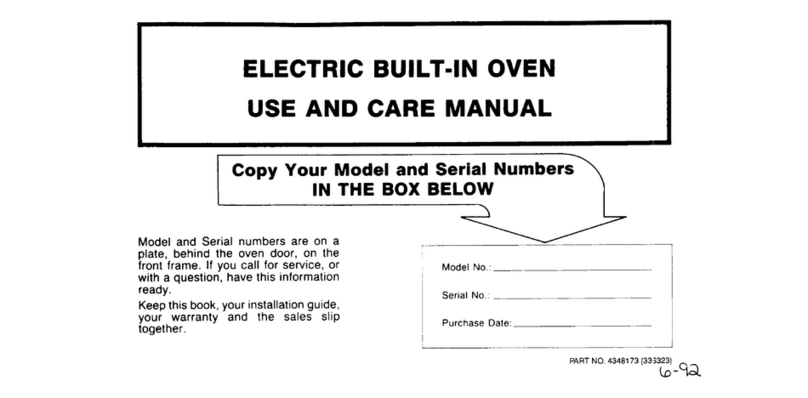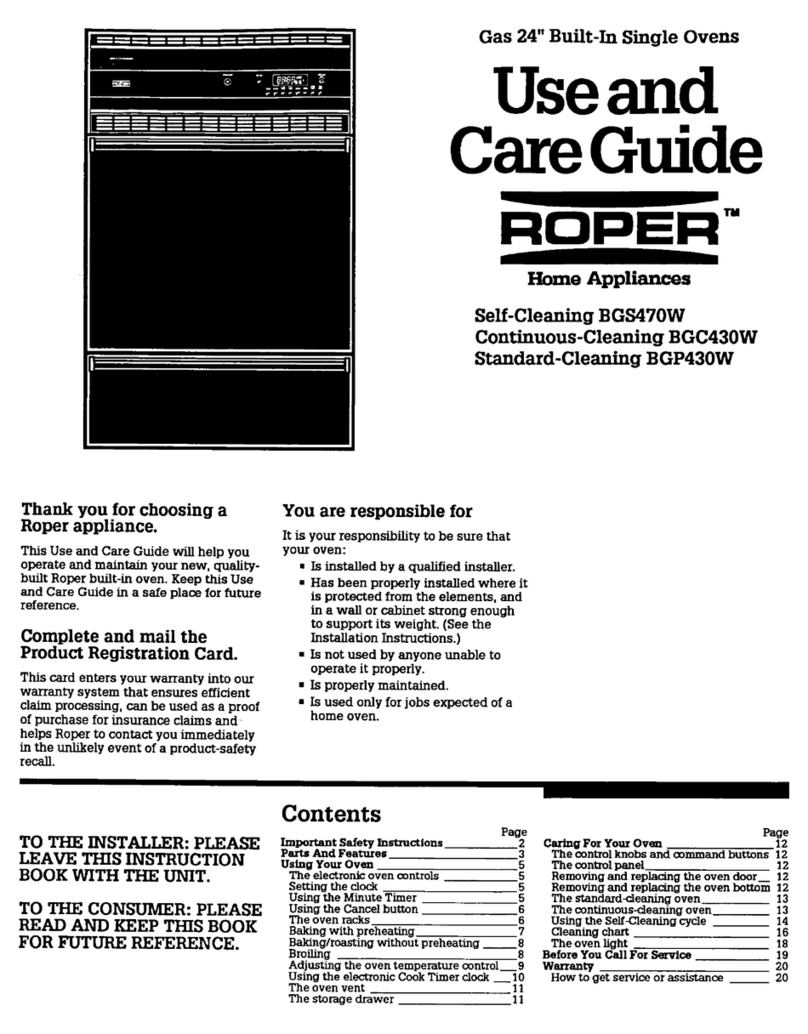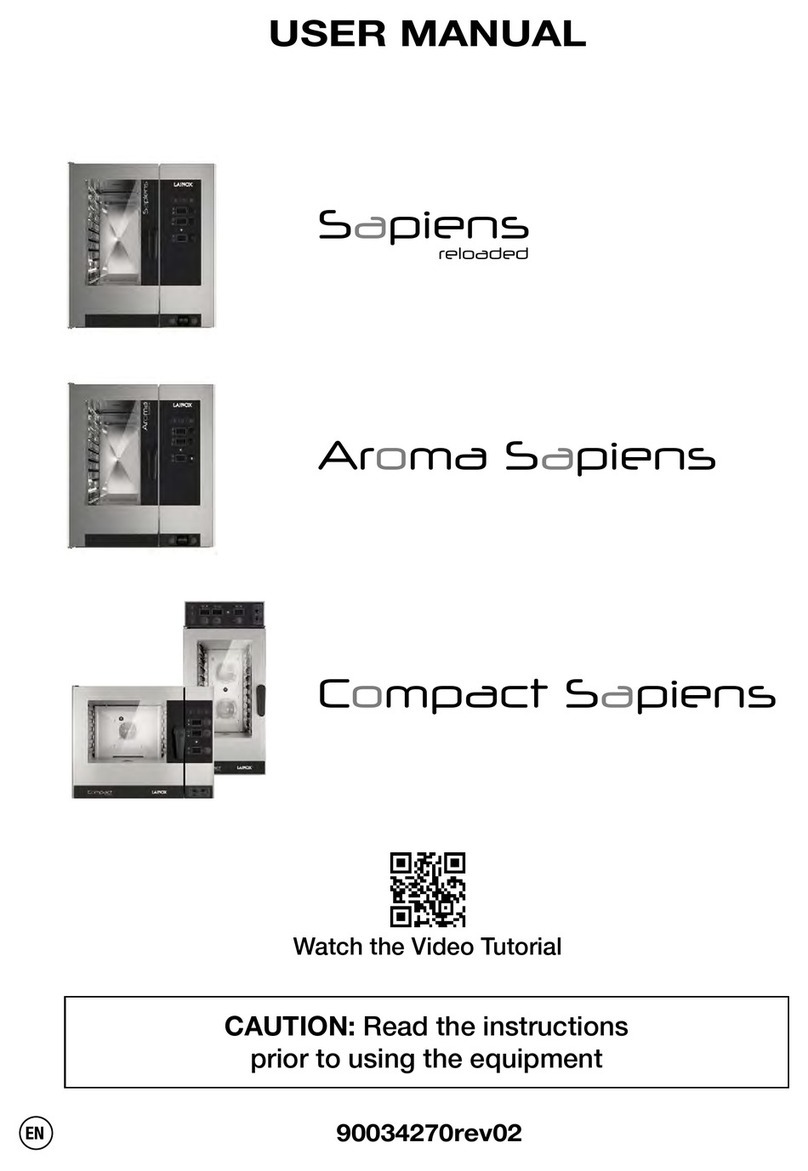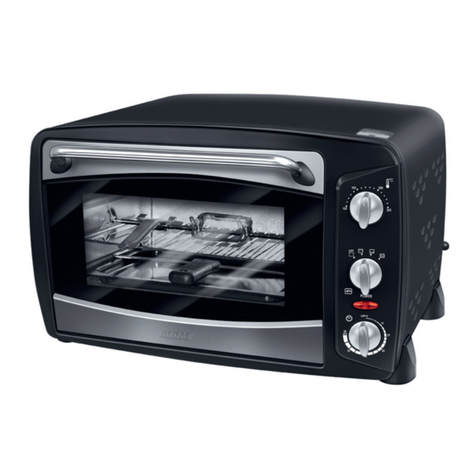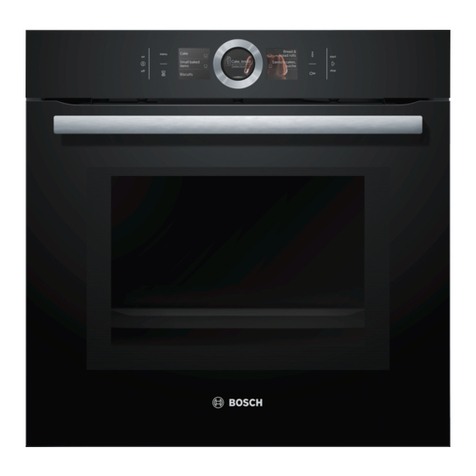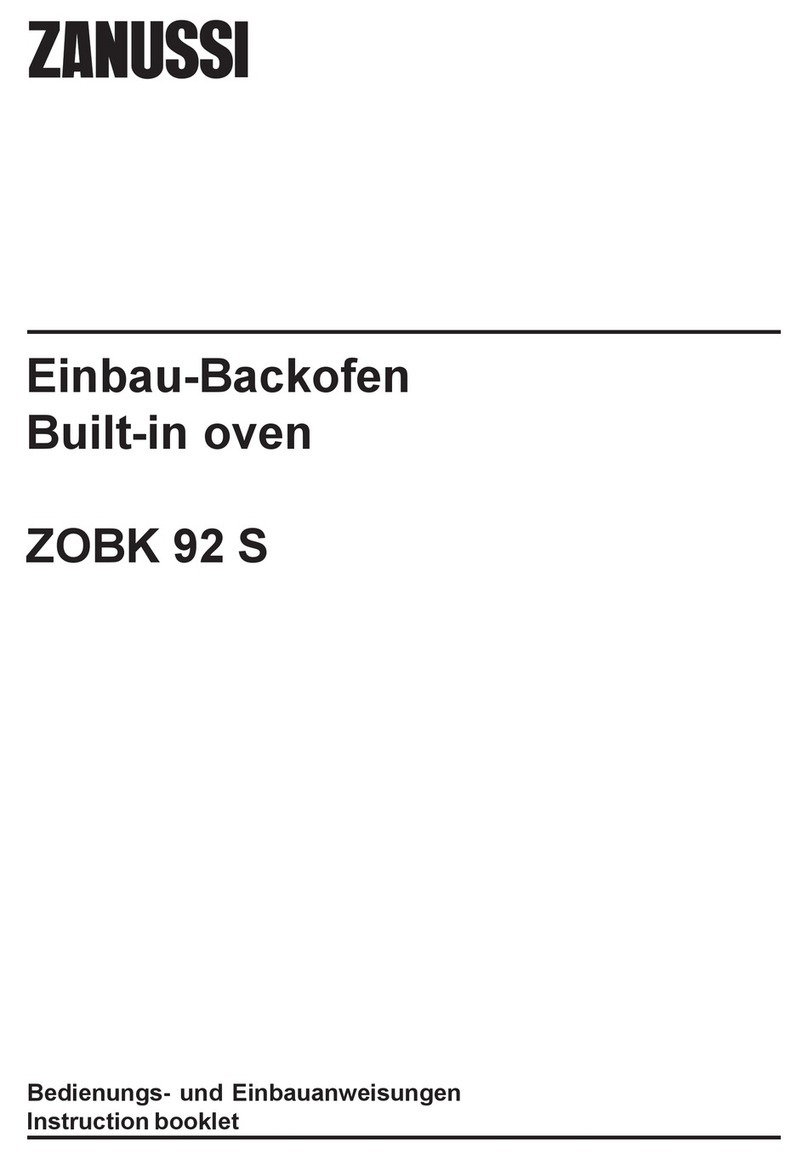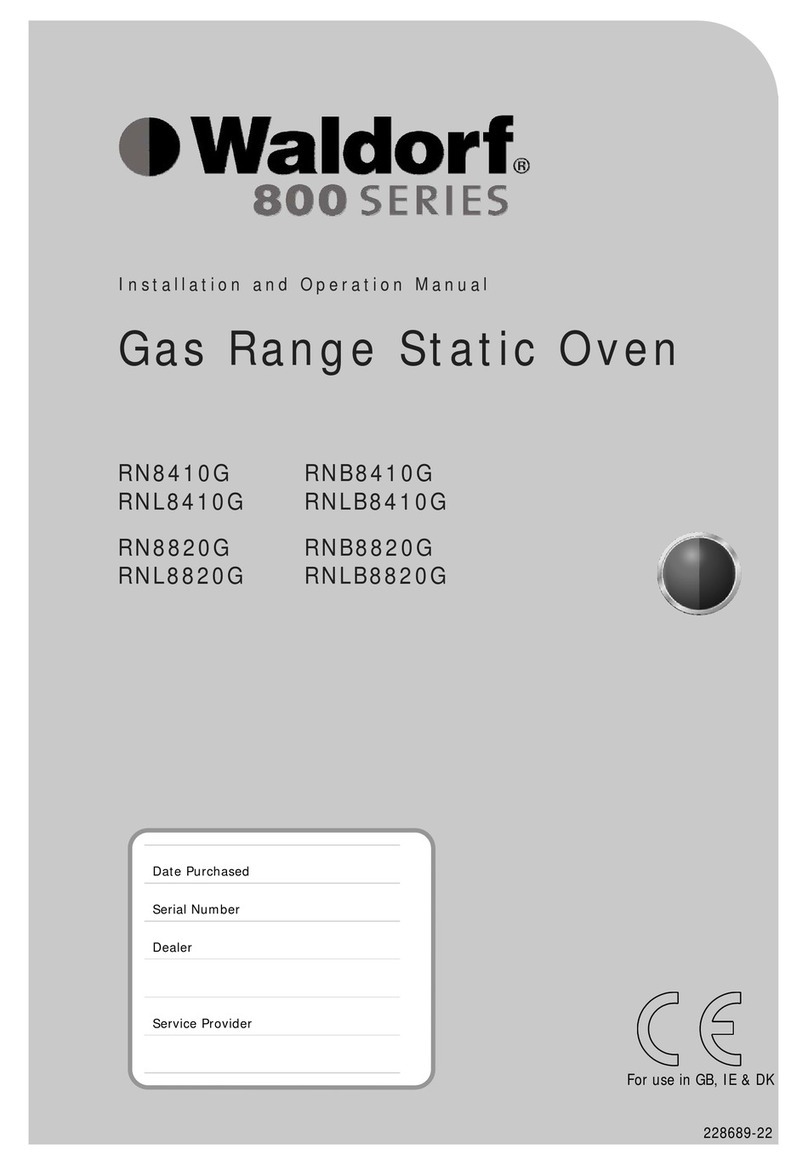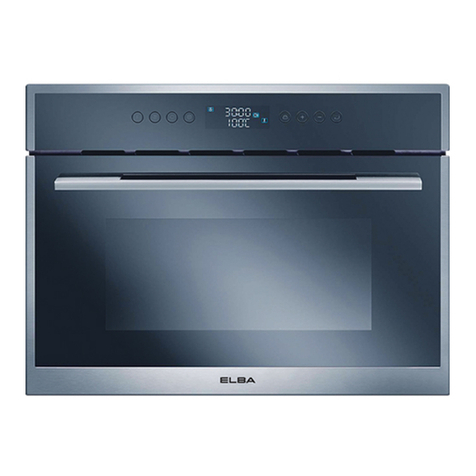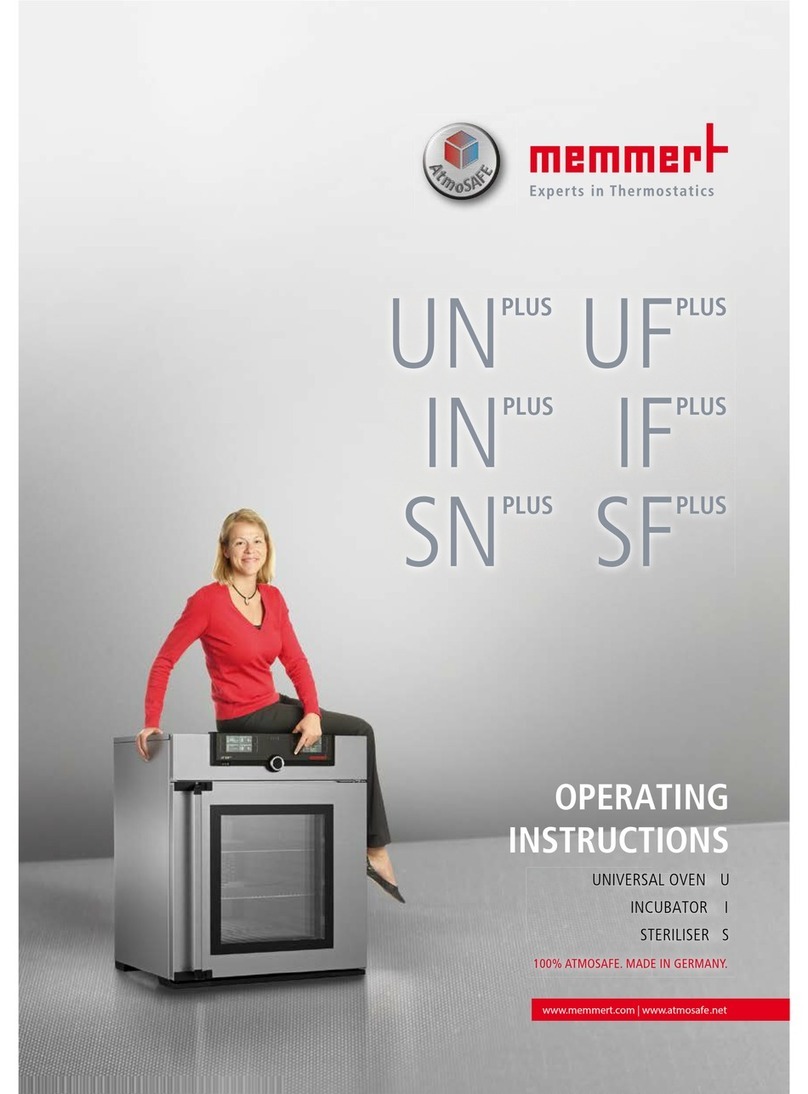Roper B400 User manual

USE and CARE MANUAL
GAS BUILT-IN
model B400
INSTALLATION
l II I1
IIIllIIIIIII)I)IIIIII
4356235 (343754-l )

THISPAGE

FOR YOUR SAFETY
If you smell gas:
1. Open windows.
2. Don’t touch electrical switches.
3. Extinguish any open flame.
4.
Immediately call your gas supplier
FOR YOUR SAFETY
Do not store or use gasoline or other
flammable vapors and liquids in the
vicinity of this or any other appliance.
L.P. Burner Adjustments
The adjustments in the Installation Section must be
made before you try to use your oven.
If you are using Liquified Petroleum Gas (bottled
gas) all L.P. adjustments in the Installation Section
must be made before use.
Ifyour oven is not properly adjusted, flames may be
too high, or the oven may use too much fuel, release
toxic fumes or cook poorly.
WARNING: Improper
installation, altera-
tion, service or main-
tenance can cause in-
jury or property dam-
age. Refertothisman-
ual. For assistance or
additional information
consult a qualified
installer, service
agency, manufacturer
(dealer) or the gas
supplier.
GNOTOB-1

NOTICES
INSTALLATION
USE AND CARE
Important Instructions for Your Safety
Your Oven and Its Features
Burner Ignition
Oven Cooking
Broiling
Favorite American Recipes
Continuous-Cleaning Oven Finish(only on selected models)
Cleaning Tips
Removable Oven Parts
SERVICE
Replacing Oven Light Bulb
What to Do before Calling for Service
Adjusting Oven Temperature
WARRANTY
GCOOl9

INSTALLATION
INSTALLER: Leave these instructions with the OWNER: Keep these instructions for future
appliance.
US.
TOOL LIST
1.
1i8”drill bil
2. Electric or hand drill
3. Flat bladed screwdriver
4. No. 1 or No. 2 Phillips screwdriver
5. Pencil
6. Ruler and straight edge
7. Hand saw or saber saw
8. Pipe wrench
9. 5/8” wrench and l/2” wrench or adjustable wrench
10.
Pliers
LOCATION
Cabinet space must be provided to completely enclose the
recessed part of your built-in oven except for the vent thimble
on outside vented units. See Figure 1 for all necessary
dimensions. A cutout 22” wide by 30.3/16” high must be
made in the cabinet front. It IS best to make a template to
insure accurate cutting.
Place the bottom of the template on a level base line, 32-112”
above the floor. This will position the open oven about 37”
above the floor.
It is important lhat the oven be installed at or above the
mlnlmum height specified. The unit has been tested and
24-A
{M’N
v 24”
approved in accordance with safety standards at this
height. The vent area may get hot when the oven is in
use. Following these installation instructions will move the
vent area out of a range where it would likely be touched by
small children.
IMPORTANT: If you install the oven In a corner, you
must have aminimum of 4” between the side of the oven
and the adjacent wall or cabinet (see below.) The 4”
clearance from the wall is needed to make the screws on
the side of the control panel accessible, should the unit
need
servicing.
The cabinet must have a solid bottom. The solid bottom may
either be at the floor or level with the bottom edge of the
cutout opening. If the solid bottom is to be at the floor, two
runners, centered within the cabinet, 1l”apart may be used
to support the oven.
Be sure the oven support is solid enough to hold the weight
of the unit - about 130 pounds. Also, be sure the oven
supporl is level and straight.
Drafts inside the oven cabinet may affect safe use of your
oven. Any openings around gas and electric service outlets
must be sealed at the time of installation to prevent drafts
r---- ----- I
I
I
OVEN
-rjfy &,-I
WALL OR/
CABINET
3
WOOD SCREWS
SECURE UNIT
TO CABINET
C
GINS78

ELECTRICAL CONNECTIONS
Check with your local utilities for electrical codes that apply
in your area If there are no local codes, Ihe National
Electrical Code, ANSI/NFPA No. 70-1987 must be followed
You can get a copy by wnting
National Fire ProtectIon Association
Batterymarch Park
Oulncy, MA 02269
An adequate electrical supply and outlet must be used to
operate the electrical parts of your oven The oven cord has
a ‘three prong plug and must be used with a properly
grounded three hole outlet with standard 120 volt 60 Hertz
AC household current.
Install the electrical outlet below the oven on the right side
It should be easily reached through cabinet doors below the
oven See Figure 5
The preferred method of electrlcal hook-up IS shown In Fig
2 Ii you do not have a grounded (three hole) outlet, have a
qualified electrician change your old outlet or Install a new
lone
.4 grounding adapter plug may be used to convert a two hole
outlet to a three hole outlet until a grounded outlet can be
installed See Figure 3 This should be done only temporar-
sly and only
11
the two hole outlet
IS
properly polarized and
grounded Have a quaIlfled electrician test the outlet to be
sure it meets all requirements
Always unplug the oven cord before making any electri-
cal repairs to the oven. When unplugging the oven,
always grasp the plug, never the cord. Never use an
extension cord to connect the oven to the electrical
supply.
A
Do not under any circumstances cut or
removegrounding prong from oven cord.
Failure to provide proper polarization
may create a hazardous condition.
P!~.J(; ~YITH GROUND PRONG
PG:)PERLY POLARIZED A’lG
GR3clNDED RECEPTACLE
POLARIZED RECEPTACLE
PROPERLY GROUNDED
METAL EYELEl
CiFWND
RECEPTACLE
PLATE
MOUNTING
SCREW
Fig. 2 Fig 3
PREFERRED METHOD TEMPORARY METHOD
GAS CONNECTIONS
Do not operate the burners of this oven
burner orifices for L.P. gas usage.
You must follow local codes when InstallIng your built-in
oven Check with your local utiltties for codes and ordt-
nances that apply in your area If there are no local codes.
you must follow the Natlonal Fuel
Gas
Code ANSI/Z223 l-
1988 and Addenda 2223
12
1987 You can get a copy by
wrltlng American Gas Association
1515 Wilson Boulevard
Arlington (Rosslyn), VA 22209
If the oven ISto be Installed In a mobile home, the lnstallatlon
musl conform to the MdnufaClured Home Construction and
Safety Standard, Title 24CF-R part 3280 (formerly the Fed-
eral Standard for Mobile Home Construction and Safety,
Title 24, HUD part 280) or, when not applicable, the standard
for Manufactured Home Installations 1982 (Manufactured
Home Sites. Communitres and Set-ups) ANSI A225l-
1984, or with local cooes You can get a copy of the Federal
Standard by wrlllng
Ofllce of Mobile Home Standards
tHUD BulldIng
451 7th Street, S W
Washington. D C 24010
The gas suppiy must be shut off before removing an old oven
and stay off until the hookup of the new oven is finished You
should know where your main gas shut off valve
IS
located
N.ever reuse an old connector when installing a new
oven.
Be sure no stralri
IS
put on the connecting line assembly To
prevent gas leaks put a pipe joint compound that resists the
action of L P gas on the male (outstde) lhreads only
Use 1‘2”gas inlet pope The hole for the gas inlet pipe should
be g-114” to the left of the center line of the cabinet (see
Figure 4) and 23” behlnd the front surface of the cabinet
Connect a 1 2” coupling to the Inlet pipe The top of the
coupling should be about 2-1’2” above the bottom edge of
the cutout opening (see Figure 4) Before you put the oven
into the cabinet opening, connect the 112” reducer shut-off
Jalve to the coupling (see point A In Figure 4) This valve IS
supplied wllh the oven and IS wire-tied to back of unit
Put the oven lnlo lhe cabinet NOTE The oven/brollerdoor
may be removed before Inserting the oven Into the cabinet to
lessen the weight See the inslructlons tn the Cleaning and
Care section of the Owners Manual for removing Ihe door
When the oven
IS
In place remove the hookup and adjusl-
ment access covers at the lower oven back (Figure 5)
Reach lhrough the access opening and connect the oven
tubing to the reducer shut off valve (see point B in Figure 5)
Use a 518” wrench to turn the ftttlng Tighten the fitting snugly
4 GINS532

but do not force it, Forcing could damage the fitting and
tubing and cause leaking.
Apply liquid leak detector to all connections in the supply line,
manifold and oven to test tor gas leaks. Do
not use an open
flameto look
for leaks.
Bubbles will form where any gas is
leaking. Turn off the main gas supply before you try to stop
a leak. After all leaks are stopped, turn on the gas supply and
recheck all connections for leaks before lighting burners. All
leaks must be stopped before llghtlng any burners.
After electrical and gas connections have been made, use a
1!8”drill bit to drill holes in the cabinet front, through the holes
in the oven trim. Secure the oven in the cabinet with the
screws provided
Fig 4 &UT OFF VALVE HERE IF
BEQUIRED BY LOCAL REGULATIONS
1 II 1
Fg. 5
MAKING L.P. GAS ADJUSTMENTS
A
If you are using L.P. (bottled) gas, all the
adjustments described below must be
made before you make any burner ad-
justments or use the oven.
To adjust your oven for use with L.P.
gas,
follow the steps
below.
Step 1: Adjust Pressure Regulator
NOTE: The pressure regulator Is set for natural gas. To
use L.P. gas, the regulator must be adjusted.
Locate the pressure regulator (see Fig. 5). Unscrew the cap
and remove the spring retainer, Fig. 6. Turn the retainer over
and put it back into the cap so L-P. is showing on the bottom
end of the retainer. Replace the cap.
I * --i
PRESSURE REGULATOR
Step 2: Adjust Burner Orifices
CAUTION: The following adjustment must be made
before turnlng on the burner. Failure to do so could
result in serious Injury due to high flames and toxic
fumes.
Use a l/2” open end or adjustable wrench to turn all orifice
hoods in the L.P. direction, about l-1/2 turns or until snug.
See
next page.
Do not overtlghten or you may distort the
orifice hood and needle.
Pressure Test Information
The maximum allowable pressure for the regulator is 14”
W.C. The minimum pressure needed to check the regulator
setting is 7” W.C. for natural
gas or
11” W.C. for L.P. gas.
CAUTION: The range and lts lndlvldual shut off valve
must be dlsconnected from the gas supply plplng sys-
tem during any pressure testlng ot the gas supply
system at test pressures In excess of l/2 psig (pounds
per square Inch gauge).
The range must be Isolated irom the gas supply plping
system by closing its lndlvldual
shut
off valve during
any pressure testlng of the gas supply system at test
pressures equal to or less than l/2 psig.
5
GINS79

MAKING BURNER ADJUSTMENTS
If you are using L.P.(bottled) gas, all the
adjustments described on the previous
pagemust bemadebeforeyoumakeany
burner adjustments or use the oven.
All ovens are factory adjusted for use with the natural gas
used in most
areas. But, since the gas in
some
areas may
be different, you should check all adjustments described
below.
Ifyouare using L.P. gas, all theadjustments must
be made.
Remove the oven bottom as shown in the Cleaning and Care
section of the owner’s manual. Remove the shipping wires
from the oven burner.
Step 1: Adjust Air Shutter
Turn the burner full on and check the flames. Burner flames
should not flutter or blow away from the burner. They should
be blue in color with no trace of yellow. Foreign particles in
the gas line may cause an orange flame at first, but this will
soon disappear.
If the flames are yellow or flutter, open the arr shutter more
If they blow away from the burner, close the air shutter more
Burner flames should be checked frequently and adjust-
ments made as necessary
To adjust air shutter:
Use a screwdriver to loosen the air shutter screw. Adjust the
air snutter and retrghten the air shutter screw.
Step 2: Adjust Orifice Hood
Check the inner cone of the flame. It should be about 112”
long for the oven broiler burner (see below). If the length of
the inner cone of the flame is not correct, use a li2”open end
6
GINS80-1
‘r\ BROll
To shorten the cones, tighten the orifice hood by turning in
the L.P. direction. To lengthen the cones, loosen the orifice
hood by turning in the n (see illustrations this
AIR SHUTTER
AIR SHUTTER
A ACCESS OPENING COVER
B FI FCTRICAL CONNFCTION
C TRIM CLIP
D ORIFICE COVER
E OVEN IGNITOR
NAT.

IMPORTANT INSTRUCTIONS
Teach
children not to play with range knobs
or any other part of the range
Never leave children alone or unattended
Iwhere a range 1s In use.
Always
keep the range area clear and free
from things that will burn.
Never
store things In an oven or near
cooktop elements/burners. These things
may catch fire and plastic items could melt.
Never wear loose clothing when using
your range. Such clothing could catch fire.
l
)R YOUR SAFE1
Never
store things children might want
above a range.
Never let anyone climb, sit or stand on the
open door or any other part of the
range. Their weight may make the range
tip over.
Never
use your range for warming or
heating a room. Such use could be dan-
gerous and hurt range parts.
Never
use a towel or other bulky cloth
as a
pot holder. Such clothscould
catch fireon
a
hot element/burner.
Never leave
the oven door open when you
are not watching the range.
WARNING:
To prevent accidental tipping
of the range, attach it to the wall or floor by
installing the anti-tip bracket supplied. Be
sure rear leg leveler enters slot in bracket.
Never let pot handles stick out over the
front of the range. Turn handles in so that
they cannot be bumped into. Keep the
handles away from other hot surface ele-
ments/burners.
Never leavecuoktopelementtiurners un-
watched at high heat settings. Boilovers
cause smoking
andgreasyspillovers
could
catch fire.
7 CSAFO 1

IMPORTANT SAFETY INSTRUCTIONS
Keep
this book for later use. Never try to repair or replace any part of the oven
Be
sure
your oven is installed and grounded prop- unless instructions are given in this book. All other
erly by a qualified technician. work should be done by a skilled technician.
Always
keep the oven area clear and free from Never heat unopened food containers. Pressure
things that will burn, gasoline and other flammable build up may make container burst and cause
vapors and liquids. injury.
Always
change oven rack positions while oven is
cool.
After broiling, always take the broiler pan out of the
oven and clean it. Leftover grease in the broiler pan
can catch on fire next time you use the pan.
Always use dry pot holders when removing pans
from the oven. Moist or damp potholders can
cause steam burns.
Never leave jars or cans of fat or drippings near
the oven. Never let grease build up on your oven.
You can keep grease fires from starting if you
clean up grease and spills after each oven use.
Never use aluminum foil to line oven bottoms.
Improper use of foil could start a fire and cause
incomplete combustion.
Always
use care when opening oven door. Let hot
air and steam out before moving food.
Always follow cleaning instructions in this book.
Teach children not to play with oven controls or any
other part of the oven.
Never block the flow of combustion and ventila-
tion air through oven vents.
Never try to move a pan of hot fat, especially a
deep fat fryer. Wait until the fat has cooled.
Never leave children alone or unattended where
a oven is in use.
Never
use your oven for warming or heating a
room. Such use can be dangerous and could
damage oven parts.
Never
wear loose fitting or hanging clothes when
using your oven. Such clothes could catch fire
and cause serious injury
Never use a towel or other bulky cloth as a pot
holder. Such cloths could catch fire on a burner.
Never store things in an oven.
OVEN FIRE
Read and understand this information NOW!
Should you ever need it, you will not have time
for reading.
Never use
water
on a grease fire-it will only
spread the
flames.
Do not try to move the pan.
1. Close oven door and turn controls off.
2. If fire continues, throw baking
soda on
the
fire or use a dry chemical foam or halon type
extinguisher.
GSAFll

IMPORTANT: The model
and serial number of
your oven Is found on a
tag, behlnd the oven
door, on the left side of
1. Oven Light Switch
2. Oven Vent (area may get
hot during oven use; Do Not
block ven 1)
the front frame.
Copy the numbers into
the box on the cover of
thls manual. - 3. Electronic Oven Control (see
next page)
-
6. Removable Oven Bottom
7. Removable Oven Door
and
OVEN IGNITION
When you turn the oven on, the glow bar igniter begins to
heat. When the igniter is hot enough, in about 1 minute, the
gas flows into the burner and is ignited.
The igniler glows bright orange when hot. It cycles on and
off with the thermostat and will glow whenever the burner is
on.
OVEN VENT
When the oven is on, heated air moves through a vent under
the control panel. This hot air may make control panel area
hot.
The vent is necessary for proper air circulation in the oven
and good baking results.
Do not block thls vent. Dolng so
may cause cooklng failure, fire or damage to the range.
Durlngapowerfalluretheburnercannot
be IRand you should not try to do so. 1
GBIF07

The Electronic Range Control (ERC)
TIMER CLOCK
1. TIME AND TEMPERATURE DISPLAY
WINDOW -
Shows the time of day, the
times you set for automatic oven opera-
tions or the timer, oven temperature or
broil settings you have selected.
2.
SET KNOB
- Turn to set times and temper-
atures.
3. FUNCTION INDICATORS
- Light up to
show whether the oven is baking or broil-
ing and whether you are using the timer.
4. AUTOMATIC OVEN INDICATORS -
Show whether an automatic oven opera-
tion that will start later (delay) is currently
programmed and whether oven or stop
time is being shown.
5. OVEN TIME
- Push before setting length
of time the oven will be on (for automatic
oven operations).
6. STOP TIME
- Push before selecting the
time when you want the oven to turn off
(for automatic oven operations).
7.
CLOCK
- Push before setting clock or to
bring time of day back into the display.
8. TIMER
- Push before setting amount of
time.
9. BAKE
- Push before setting temperature.
10. CANCEL
- Cancels everything except the
clock and timer. Push to turn oven off or to
clear everything if you’ve made a mistake in
programming.
11. BROIL
- Push before selecting broil set-
ting.
TO SET THE CLOCK
TURN TO SET
TIME OF DAY
CERC02
10

Oven Cooking
Always follow recipe carefully.
Measure ingredients properly.
Use proper pan placement.
Place pans on the oven racks with 1%” - 2”
of air space on all sides of each pan. Avoid
overcrowding the oven.
Pans too close to each other, to oven walls
or to the oven bottom block the free move-
ment of air. Improper air movement causes
uneven browning and cooking.
2 cake layers
4 cake layers
l
Most baking should be done on the second
shelf position from the bottom. When baking
several items, use two shelves placed on the
second and fourth rack positions from the
bottom of the oven. Stagger pans so that no
pan is directly above another. Bake angel
food cakes on the first shelf position from
the bottom of the oven. If your range has a
folding oven rack it is recommended that
you place the folding rack in the lower posi-
tion when using both racks.
Let the oven preheat thoroughly before
cooking baked products. Allow lo-15 min-
utes preheat time.
Avoid opening the door too often to check
the food during baking as heat will be lost.
This may result in poor baking results.
Cakes, cookies, muffins, and quick breads
should be baked in shiny pans - to reflect
the heat - because they should have a light
golden crust. Yeast breads and pie crusts
should be baked in glass or dull (non-shiny
pans) - to absorb the heat - because they
should have a brown, crisp crust.
Oven temperatures should be reduced 25
degrees below recommended temperatures
if you use dark pans or oven proof glass.
There may be some odor when the oven is
first used. This is caused by the heating of
new parts and insulation.
Do not cover the oven bottom or an entire
oven rack with foil. The foil can block nor-
mal heat flow, cause cooking failures, and
damage the oven interior. In gas ranges the
use of foil in the oven could cause incom-
plete gas combustion.
GOVCOl-1
11

Broiling
PUSH WHEN
Most foods can be broIled at the HI Bro+l Setttng. Si:le~:+
the LO Broil setting to avoid excessive browning or drv-
ing of foods that should be cooked to the well done
stage (such as thick pork chops or poultry)
BROILING TIPS
l
Brolltng IS cooking by direct heat from the Droll
burner Tender cuts of meat or mannated meat should
be selected for broilrng. For best results steaks and
chops should be at least %” thick
l
After plactng food on the broiler pan, put the pan on
an oven rack In the lower brolltng compartment. The
recommended rack position and cooking time can be
found in the chart at nght.
l
The closer the food IS to the broil burner, the faster
the meat browns on the outside. yet stays red to pink
In the center. Moving the meat farther away from the
burner lets the meat cook to the center while brown-
tng outside. Side one should be cooked 1 - 2 minutes
longer than side two.
l Your oven door and broiler door should be com-
pletely closed while brolllng.
* Use only the broiler pan and grid that came with your
range for broiling. They are designed for proper drain-
age of fat and liquids and help prevent spatter, smoke
or fire
l Do
not
preheat
when broiling. Preheating may cause
the thermostat to cycle the broil burner off and on.
For even broiling on both sides, start the food on a
cold pan.
l
Tr.m the outer layer of fat from steaks and chops. Slit
the fatty edges to keep the meat from curling.
l
For maximum juiciness, salt the first side just before
turning the meat. Salt the second side just before
serving.
. Brush chicken and fish with butter several times as
they broil. When broiling fish,
grease
the grid to keep
it from sticking and broil with skin side down. It is not
necessary to turn fish.
0 Never leave a solled broiler pan In the range.
Grease
in the pan may smoke or burn the next time the oven
IS
used.
l Be sure you know the correct procedure for putting
out a grease fire. See the sectlon on safety.
I
!A
Do not cover the entlre broiler grld wlth foil.
Poor dralnage of hot fat may cause a broiler
fire.
I
If a fire starts, close the oven and broller
doors and turn controls off. If fire contlnues,
throw baking soda on the fire. Do not put
water on the fire.
POSITIONING BROILER PAN
After placing food on the broiler pan, slide the pan Into
the proper rack position.
Be sure the sump (grease well)
in the pan is to the front of the range.
_--.-.--__
Medium
This chart is a general guide. The size, weight, thick-
ness, and starting temperature of the food as well
as
your own personal preference will
affect
the cooking
time. Times in
the
chart are
based on
the food being
at
refrigerator temperature.
12
GBRL04

Favorite American Recipes
A Collection from Around the Country
LAZY-DAY COFFEE CAKE
314 cup margarine, softened
? cup sugar
2 eggs
1 cup sour cream
2 cups all-purpose flour
1 teaspoon baking powder
1
teaspoon soda
1I2 teaspoon salt
1 teaspoon nutmeg
3 4 light browncup sugar
112cup chopped pecans
1 teaspoon cinnamon
Cream margarine and sugar until light and fluffy. Add eggs and sour cream; mix well. Combrne flour, baking powder, soda.
salt and nutmeg Add to batter and mix well. Pour batter into greased and floured 13” x 9” x 2” baking pan.
Combine brown sugar, pecans and cinnamon; mix well. Sprinkle one half of this mixture over
cake
batter; swirl mixture
through
batter
Spnnkle remaining one half mixture evenly over cake batter.
Cover and chill overnight Uncover and bake In preheated 350°F oven for 35 to 45 minutes or until cake tests done with
toothpick
BROCCOLI CASSEROLE
2 - 10 oz. pkg. irozen chopped broccoli
1 cup mayonnaise
1 cup sharp cheddar cheese, grated
2 eggs, beaten slightly,
1 can cream ol mushroom soup
2 tablespoons chopped onion
1 cup cheese cracker crumbs
Preheat oven to 375” F. Cook broccoli according to package directtons; drain
MIX with other ingredtents. Pour tnto greased two (2) quart casserole. Spnnkle
with cheese cracker crumbs Bake at 375°F for 2@25 minutes.
SOUTHERN BRUNSWICK STEW
A delrcious quick-to-make hearty stew that WIII feed a crowd or feed the family. Refrigerate or freeze the remainder for
another day.
1 - 70 oz. can barbecue beef
1 - 10 oz. can barbecue pork
1 - 24 oz. can Brunswick stew
1 - 5 oz. can boneless chicken
1 - 12 oz. can vacuum packed corn niblets
1 - 16 oz. can baby lima beans, drained
2 - 76 oz. cans stewed tomatoes
1 - 14’12oz can sliced okra, drained
Drain okra
and lima beans. Add lo all other ingredients in 4 quart
pan Heat on medium to serwng temperature.
13

TWO CORN CASSEROLE
l/2 cup margarine
3/4 CUP chopped green pepper
l/3 cup chopped on/on
3 eggs, well beaten
17 oz. can cream style cxn
17 oz. can whole kernel corn with llquld
8’0 oz pkg. corn muffin m/x
1 cup cheddar cheese, shredded
Preheat oven to 350” F. Saute green peppers and onron II_)margarine; combine
wrth remaining Ingredients except cheese Pour Into greased two (2) quart
cas-
serole sprinkle with cheese and bake 45-55 minutes 1r-1350” F oven Let stand 5
minutes before servrng.
Courbry: Ill/no/s Cooperafwe ~xlens~on Homemakers
FUDGE PIE
APPLE DESSERT
2 - 1 oz. squares semi-sweet chocolate
1 stick margarine
1 cup sugar
1i4 cup flour
2 eggs
1 fsp vanilla
Dash sait
1z cup chopped pecans
Frozen 9” pie shell
Preheat oven to 350°F Melt chocolate and margarine. Add other
lngredlents to melted mixture, Pour into unbaked pie shell and
bake 35-40 minutes or untii pie appears set. Serve warm with ice
cream or whipped cream.
1 _ 20 oz. can apple pre filiing
l/2 cup sugar
1 - 9 oz box white cake IT;IX (I layer size)
1 stick margarine, melted
l/2 cup chopped pecans
Preheat oven to 350°F Piace in layers rn greased 9” or IO” square baking dish:
apples, sugar, dry cake rnlx. Pour melted margarine over top of cake mix. Bake
at 350°F for 35 minutes Sprinkle with pecans. Continue baking 15 minutes,
Serve harm.
GLORIFIED CORN BREAD
7 cup self-rising corn meal
7.:2 cup sour cream
7 cup cream style corn
1i2 cup cooking oil
Preheat oven to 425°F. Place approximately 2 tablespoons cook-
ing oil in IO” oven proof skillet or 8” or 9” square baking pan. Place
pan in hot oven until oil is hot. Tilt pan to coat bottom evenly. Mix
all ingredients. Pour mixture into hot greased pan. Beke 2G25
minutes or until golden brown.
CRCPO2- 1

Continuous-Cleaning Oven Finish (some models)
The rough surfaces in your oven have a continuous-
cleaning finish. Spatters spread and fill the pores of this
special finish and then gradually burn away at medium to
high temperatures.
Heavy spillovers or boilovers need a little help from you:
Use clear water and a detergent or a cleanser such as
Fantastik, Liquid Ajax, Top Job, Liquid Lysol or Mr.
Clean, mixed in water, and a soft cloth or nylon brush
to clean any heavy spillovers.
Do not use paper towels or sponges because particles
of these materials will rub off and clog the pores of the
oven finish.
Crusty and varnish-like stains clog the pores in the
finish and must be removed or broken up before
cleaning takes place. They can be loosened by gently
tapping the stain with a iryooden or plastic utensil.
After cleaning the oven surface, rinse it well using
three tablespoons of vinegar mixed with a quartpof
cold water. Blot up excess liquid.
Never scrape or use abrasive materials such as scour-
ing powders, commercial oven cleaners or steel scour-
ing pads for cleaning up spillovers. These materials
will scratc.h and damage the finish.
The remaining soil will gradually burn off with normal
oven use
The oven will appear presentably clean, but some spat-
ters may be present.
The higher the oven temperature, the faster the cleaning
actron. Cleaning time depends on type and amount of
soil, oven temperature and length of oven use.
If stubborn stains remain after normal oven use, you can
operate the oven empty at 403°F for additional continu-
ous cleaning action.
The continuous-cleaning process is illustrated below:
1
2 3 4
1. A spillover has formed a mound of soil
2. The spillover has been wiped up.
3. Amount of soil remaining after four hours of oven use
at 400” F.
4. After eight hours of oven use at 4OO”F, the soil is
removed.
You can protect the oven bottom from spillovers by using
a piece of foil under your utensil. Cut the foil slightly
larger than the pan and turn up the edges. Use two oven
racks and put the foil on the lower rack below the pan. Do
not use foil on the same rack as the pan. This will reflect
heat away.
Do not cover the oven bottom or an entire
mal heat flow, cause cooking failures, and
Avoid spilling salt on the continuous-cleaning finish. Salt
may become trapped in the pores and may cause rusting.
Never
use oven cleaners on the continuous-cleaning
finish. Such cleaners will damage the finish.
Some foods may leave a discoloration even when the
surface is clean.
15 CCCL01

Cleaning Tips
On the following pages, all removable parts on
your range are shown. Referto those pages when
cleaning your range.
Warm water, a mild detergent and a soft cloth are
safe to use on all cleanable parts of your range. All
purpose cteaners, such as Fantastikm can also be
used. Do not use metal scouring pads, except
where recommended.
PART CLEANING MATERIALS REMARKS
Control panel and knobs Detergent, warm water, soft cloth Do not use abrasive
cleaners.
Knobs pull oil
for easier cleaning.
Glass oven door/window
(some models) Glass cleaner and paper towels Remove stubborn soil with paste of baking
soda and water. Do not use abrasive clean-
ers. Rinse thoroughly.
Oven finishes:
Cointinuous-cleaning (some
models) See special instructions nn previous page.
Standard porcelain enameled Detergent, warm water , scouring pad or Rinse thoroughly after cleaning. When using
ovens, porcelain enameeled soap filled steel wool pad or non-aerosol oven cleaner porcelain enameled parts of
(smooth) areas of continu- (brush-on) oven cleaner continuous-cleaning ovens be sure to keep it
o&-cleaning ovens, broiler away from the continuous-cleaning finish.
compartment Oven cleaners will damage the continuous-
cleaning finish. Oven bottom can be re-
moved for easier cleaning. Remove oven
botlomofconlinuous-cleaning ovens ifclean-
ing it with oven cleaner.
Ovenracks (andguides on
some models) Detergent, warm water and scouring pad Removefromoventoclean. Dry thoroughly.
or soap filled steel wool pad
Broiler pan and grid Detergent, water, scouring pad Do
not leave in oven to cool. If you clean
immediately, the soil will steam loose while
you are eating. Remove pan from oven and
empty drippings. Sprinkle pan with deter-
gent. Coverwith awet papertowelandsoak.
Later, wash in sink or dishwasher.
16. GCCH11-2

REMOVABLE OVEN RACKS AND
GUIDES
Be careful not to scratch the oven finish when installing
or removing oven racks.
To Install:
1. Put the pegs on the end of the rack guide into the holes
In the oven back.
2. Lock the front hook in the slot in fhe oven side.
3. Set the raised back edge of the oven racks on a pair
ot rack guides so the hooks at the sides of the rack run
underneath the rack guides.
4 Push the rack in until you reach the bump in the rack,
then lift the front of the rack a bit and push the rack all
the way in.
To
remove:
1 Pull the oven rack out, then up.
2 Lilt the front of the rack guide to unhook it from the oven
wall and pull out.
REMOVABLE OVEN AND BROILER
RACK HOOK RACK
BUMP
DOORS
Remove the doors for easier cleaning.
To remove:
1 Open the door fully and raise the release tab on each
door hi: ge (see fig. A).
2 Raise the release tabs as far as they will go (see fig. B),
then close the door to the point where it will hold a
partially open position
3 Grasp the door firmly at the sides, pull the lower edge
away from the oven and lift the door off the hinge arms
(see fig. C).
To replace:
1 Slip the hinge arms into the upperponion of the slots in
the door.
2 Lower the door to the fully open position and push the
release tabs down (see fig. A)
17 GMNT29

REPLACING THE OVEN LIGHT (some models)
Do not touch hot oven bulb. Do not touch bulb wlth wet
hands. Never wipe oven light area wlth wet cloth.
Never touch the electrically live metal collar on the bulb
when replacing it.
Electrtcal power must be shut off If you have to replace a
broken bulb.
Replace the bulb with a 40 watt, appliance bulb. An
appliance bulb is smaller than a standard 40 watt house-
hold bulb and is made to withstand high oven tempera-
tures and have a much longer bulb life.
Table of contents
Other Roper Oven manuals

Roper
Roper Convection Oven User manual
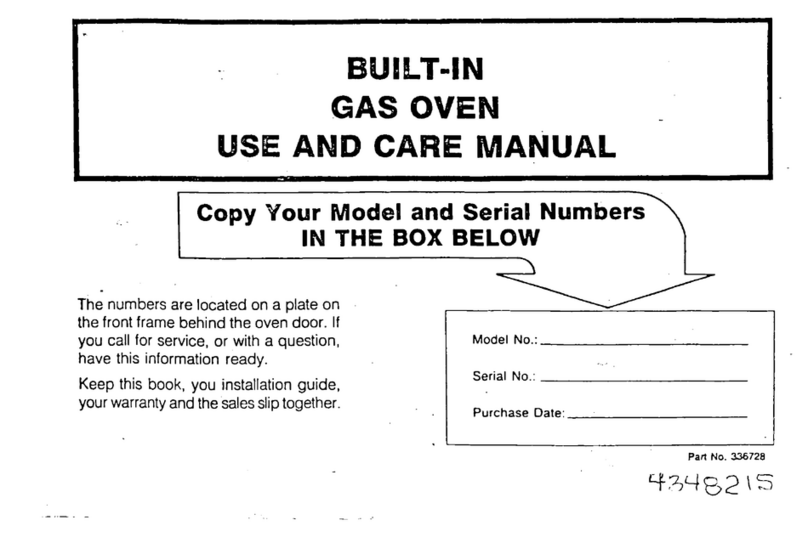
Roper
Roper B4607B0 User manual
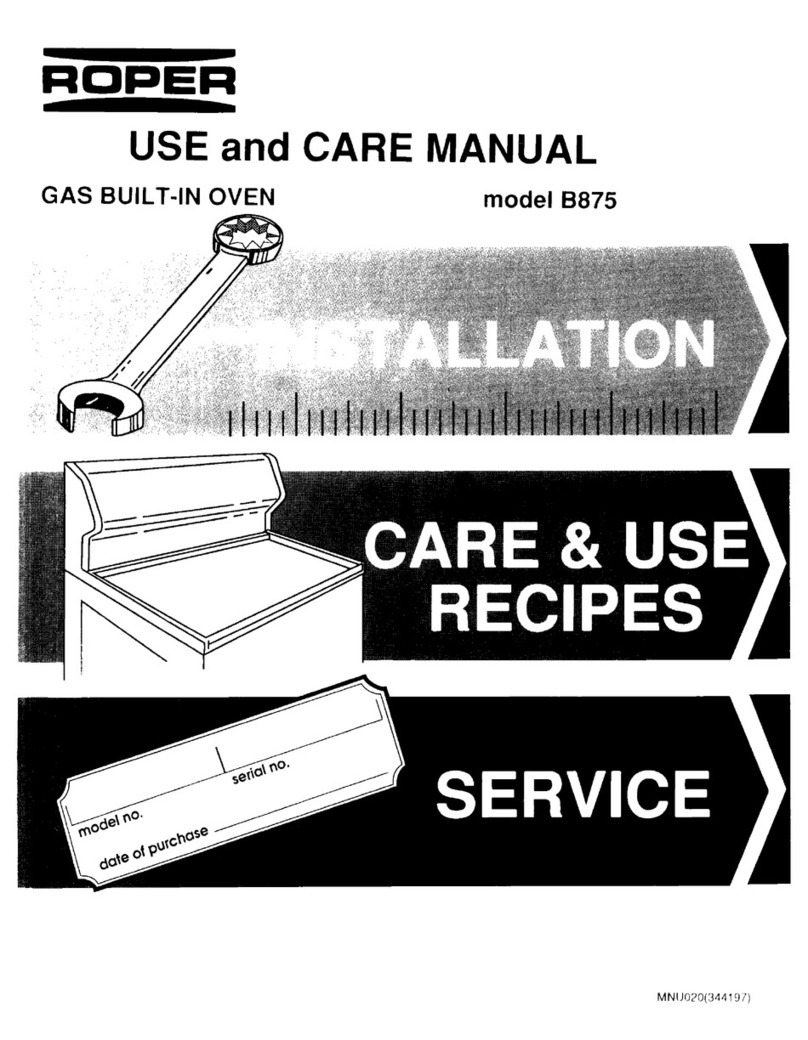
Roper
Roper B875 User manual
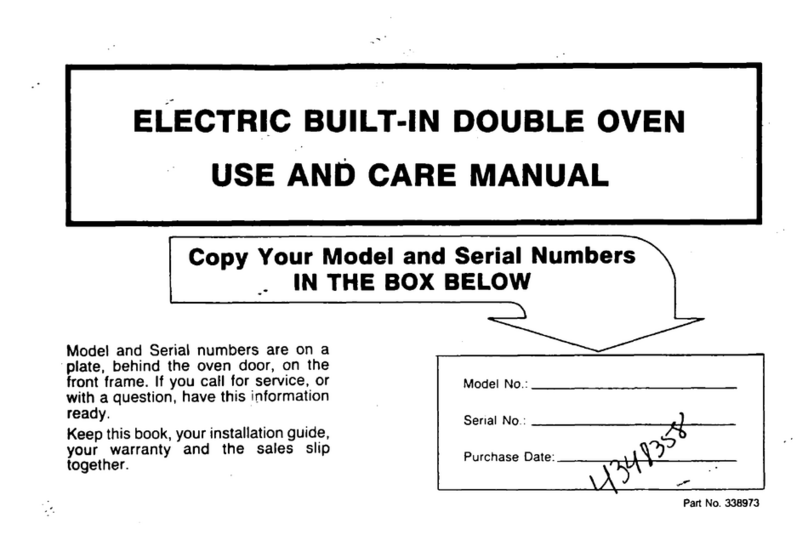
Roper
Roper B9758B0 User manual

Roper
Roper B9907X0 User manual
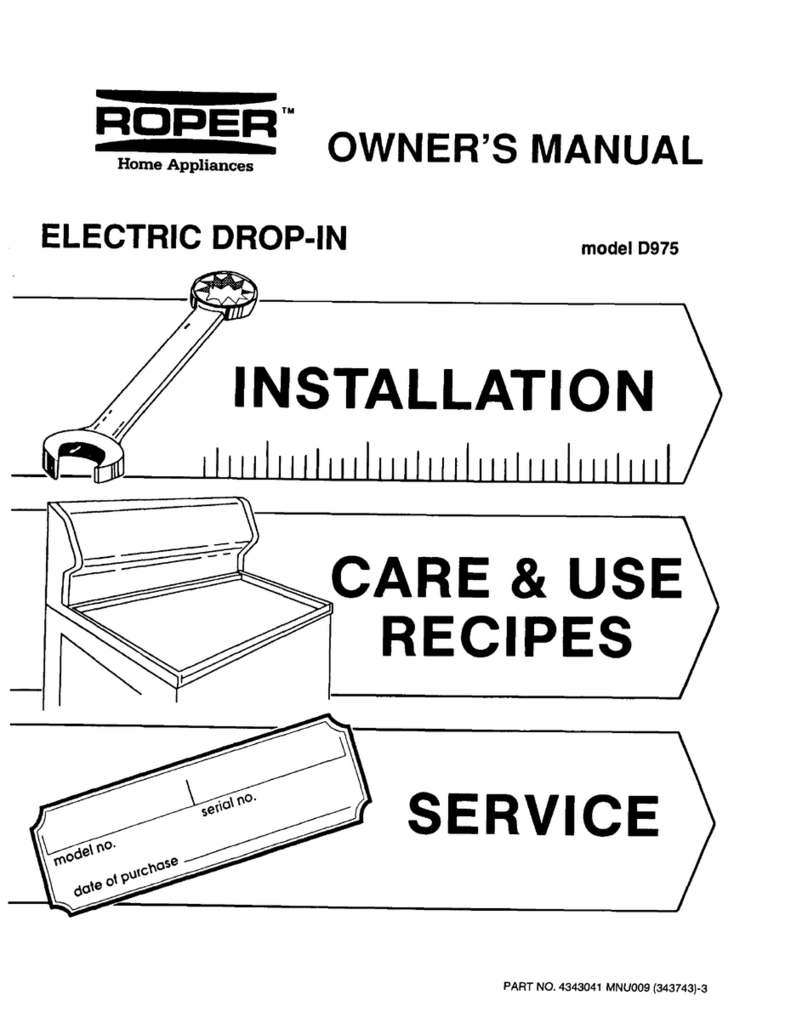
Roper
Roper ELECTRIC DROP-IN D975 User manual

Roper
Roper Roper BES450WB1 User manual

Roper
Roper Double Oven User manual

Roper
Roper B4007B0 User manual
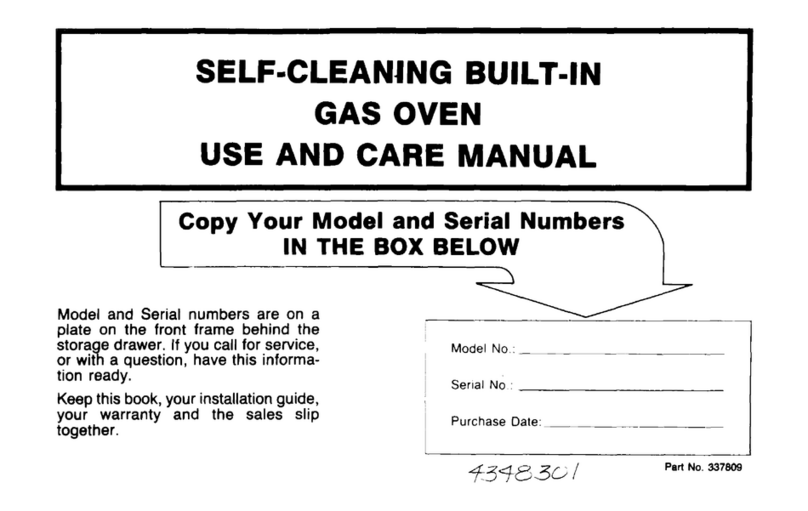
Roper
Roper B8758B0 User manual
Popular Oven manuals by other brands

Morris
Morris MOF-64550 instruction manual

Lotus
Lotus PC1T-64G Installation and operating instructions

Samsung
Samsung NV75A657 Series User & installation manual

Zanussi
Zanussi FBI 573 B Instructions for the use and care
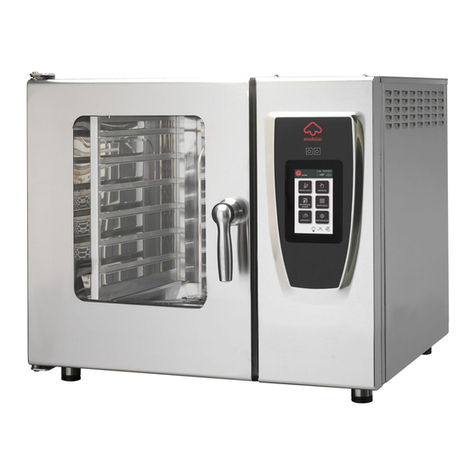
Modular
Modular EM E6/11-D Installation - use - maintenance
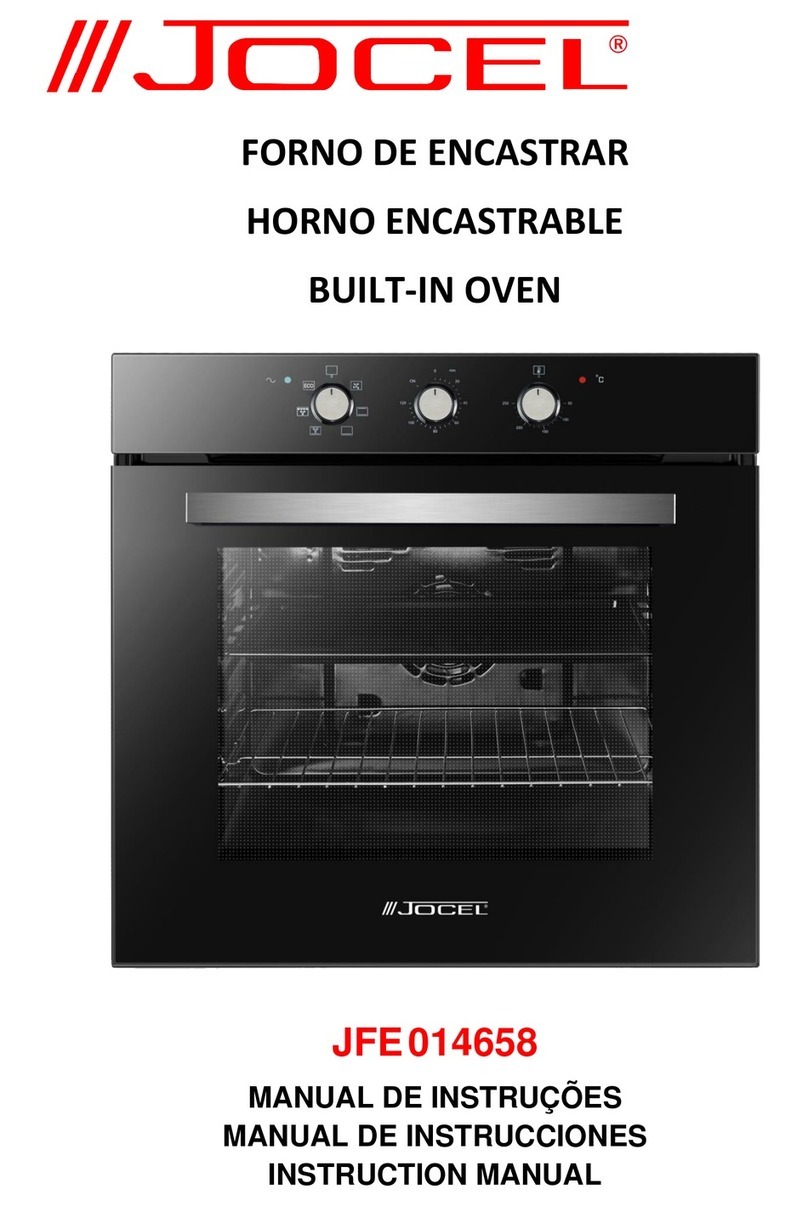
Jocel
Jocel JFE014658 instruction manual

